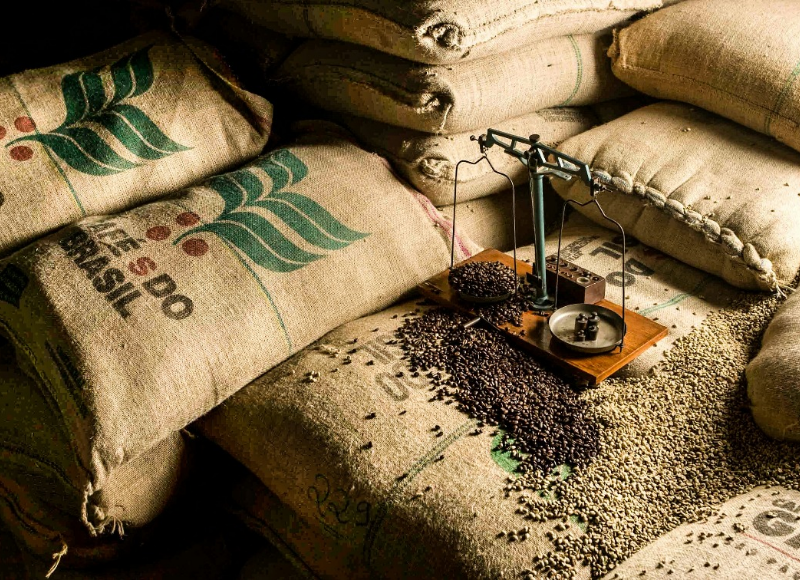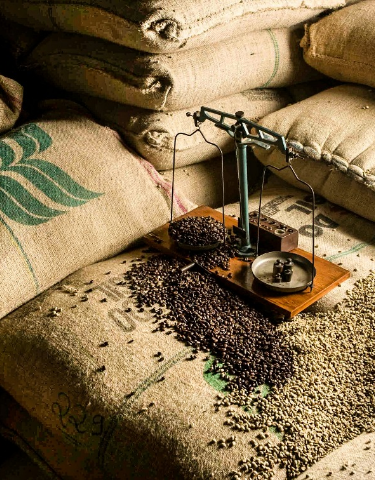Introduction
The United States of America recently announced a series of tariffs that would change global trade dynamics. These tariffs were imposed on Canadian goods, South African products, and Vietnamese exports to protect American industries. While these tariffs primarily targeted industrial goods and high-tech sectors, their ripple effects are being felt in industries worldwide. For Brazilian coffee producers, the impact has been severe, particularly in the premium sector, which relied heavily on the American market.
This policy shift presents global trade risks, supply chain risks and regulatory challenges. The introduction of tariffs raises critical questions about risk management strategies for organizations in emerging markets.
This blog analyses the risks stemming from this decision and presents future proof risk mitigation strategies to build trade resilience in the face of tariffs.
The Global Trade Risk Landscape: Navigating Uncertainty and Volatility
The US administration’s decision to impose new, higher tariff rates on several countries in August 2025 was part of a broader shift in trade policy, primarily driven by a goal to reduce large, persistent US goods trade deficits and pressure trading partners into more favorable trade and geopolitical practices, a policy often referred to as “reciprocal tariffs.” A 10% baseline tariff on nearly all imports took effect in April 2025, with country-specific “reciprocal tariffs” resuming around August, 2025.
Country-Specific Rates
Canada – The tariff on non-USMCA (United States–Mexico–Canada Agreement) compliant Canadian goods was raised from an earlier 25% to 35%. This was reportedly driven by broader trade disputes and a stated concern over issues like fentanyl smuggling and the trade deficit.
South Africa – The US administration hit South Africa with 30% tariffs. The new tariffs superseded the duty-free access previously enjoyed by South Africa’s automobile, farming and textile sectors under the African Growth and Opportunity Act (AGOA). The 30% rate for South Africa was reportedly calculated using a formula that takes the U.S. goods trade deficit with South Africa and divides it by the total goods imported from South Africa.
Vietnam – Vietnam’s rate was set at 20% following a trade framework agreement, which was a significant reduction from an earlier threatened rate of 46%. This deal aimed to secure trade concessions and address concerns about trans-shipment of goods from other countries (like China) through Vietnam.
Tariffs on Indian sectors
The sabung ayam ga28 tariffs on India were a high-profile escalation driven by both trade deficit concerns and specific geopolitical issues, resulting in one of the highest tariff rates imposed on any major trading partner. The increase to 50% was primarily cited as a geopolitical penalty related to India’s continued purchase of Russian oil amid the Russia-Ukraine war and trade tensions related to its BRICS alignment, despite previous US official statements that seemed to tolerate such purchases.
The 50% tariff heavily impacted a wide range of Indian exports, including: (i) Textiles and Apparel (ii) Gems and Jewellery (iii) Leather and Footwear (iv) Automobiles and Auto Parts (v) Chemicals, Engineering Goods, Iron, Steel, and Aluminum products.
To safeguard US supply chains, certain high-priority sectors were noted as exempt from the higher tariffs. These include Pharmaceuticals, Semiconductors, Energy and Mining.
Understanding the New Challenges in Global Commerce
The US tariff decision introduced significant volatility and uncertainty, raising several critical risks for businesses and the global economy.
Global Trade Risks – The most immediate risk is that targeted countries will impose retaliatory tariffs on US goods, leading to a tit-for-tat trade war. This raises costs for US exporters, reduces their market access, and ultimately lowers global trade volumes and GDP growth. Another point to be noted is that tariffs are essentially a tax paid by US importers, who often pass these costs on to consumers. This increases import prices, leading to domestic inflation and reduced purchasing power, disproportionately affecting lower-income households.
Supply Chain Risks – Companies relying on imports from tariffed countries face increased costs and must rapidly shift sourcing to non-tariffed countries. This process is complex, expensive, can lead to delays or shortages, and requires significant investment in new logistics and manufacturing setups.
Regulatory Risks – The tariffs were largely authorized by invoking the International Emergency Economic Powers Act (IEEPA). The use of IEEPA to impose sweeping tariffs is legally contested. The ongoing legal battles and the presidential authority’s unpredictability create extreme uncertainty for businesses regarding future tariff rates and trade policy stability, making long-term investment decisions difficult. The frequent changes in tariff rates, the implementation of country-specific exemptions (like USMCA goods being exempt from the Canadian tariff), and the suspension of the de minimis exemption increase the complexity and cost of trade compliance.
Geopolitical Risks – The use of tariffs as a geopolitical lever (e.g., the 50% tariff on India linked to Russian oil) severely strains diplomatic and strategic alliances, potentially freezing cooperation on other critical issues (e.g., India freezing US defence purchases). The tariffs accelerate a trend towards formation and decoupling of distinct trade blocs, potentially leading to a fragmented global economy where trade is driven more by political alignment than economic efficiency.
Financial Risks – The abrupt tariff announcements and legal uncertainty cause sharp fluctuations in financial markets, increasing the cost of capital and hedging for globally-exposed businesses and leading to risks in emerging markets.
Do Indian Industries Have a Risk Appetite for the New Trade Regime?
As countries like India look to expand their presence in global markets, the question of risk appetite takes centre stage. The decision by the U.S. administration to impose tariffs on various countries, including India, creates a difficult environment for businesses across industries, from textiles to information technology. According to IRM’s Risk Appetite publication, Indian companies are increasingly aware of the need to balance risk-taking with sustainability. While the Indian market is traditionally seen as risk-averse, the changing landscape of global trade has forced many businesses to reconsider their approaches.
For Indian organizations, the question isn’t just whether they have a tolerance for business risks but whether they have the tools and strategies to manage them effectively. Sectors such as technology and pharmaceuticals are better equipped to weather the storm due to their diversification into global markets and their access to advanced risk management tools. However, industries like textiles and apparel, gems and jewellery, leather goods, and marine products are highly vulnerable because they are more labour-intensive, less diversified, and face significant pricing pressure from increased tariffs.
Indian businesses must evaluate the severity and scope of US tariff impacts, assess their current risk management framework, and consider the potential for strategic diversification.
How Can Indian Organizations Mitigate Tariff Impacts?
Mitigating the impacts of tariff disruptions requires a multifaceted approach. Indian organizations can explore several tariff mitigation strategies to minimize the adverse effects of the new tariff regime. Key techniques include:
1.Pursuing Localized or Regional Manufacturing Strategies: Manufacturing closer to the end market can significantly reduce exposure to tariffs while enhancing operational control and agility. Reshoring or onshoring allows organizations to bring production processes nearer to key customer bases, such as the U.S. or European markets. This proximity helps minimize logistics complexities, improve delivery timelines, and enhance responsiveness to market changes. For Indian manufacturers, localized manufacturing not only mitigates tariff risks but also strengthens relationships with customers through faster service and greater quality control.
2.Effective Inventory Management: Tariffs often lead to unpredictable price fluctuations and longer delivery timelines. Companies can mitigate this by keeping more inventory in stock to account for potential disruptions, thus smoothing out short-term supply chain issues.
3.Experimenting with Foreign-Trade Zones: Indian businesses can leverage Foreign Trade Zones (FTZs), which allow for tariff deferrals or reductions on goods imported into the U.S. or other key markets. This strategy reduces upfront costs and can be particularly effective for high-volume exporters.
4.Developing Tariff Engineering Practices: Companies can adopt tariff engineering, which involves designing or reconfiguring products in ways that minimize tariff exposure without compromising quality or performance. For example, restructuring the production so that a portion of the manufacturing process occurs in countries with favourable trade agreements. This modifies the “country of origin” and may reduce the tariff burden.
5.Exploring Multi-Location Production Models: Implementing a dual or multi-site manufacturing strategy can effectively reduce tariff exposure and ensure supply chain flexibility. Under this model, production is distributed across multiple geographic locations, allowing organizations to quickly adapt to shifting trade policies and regional disruptions. For globally distributed products, this approach ensures redundancy—reducing dependency on any single region. Indian businesses adopting this strategy can sustain competitiveness while maintaining consistent supply across international markets.
6.Using a Tariff Exposure Index: Organizations can develop a tariff exposure index, which would provide a clear, data-driven assessment of how tariffs impact various aspects of their business. This tool can be used to forecast potential risks and adjust strategies proactively.
7.Adopting a Total Cost Assessment Approach: A Total Cost of Ownership (TCO) analysis enables businesses to make informed decisions amid changing tariff landscapes. Rather than focusing solely on labor or production costs, TCO analysis considers a full range of factors—logistics expenses, tariff implications, transportation risks, and post-production costs. By understanding the true financial and strategic impact of each option, Indian manufacturers can align their global supply chain strategies with both cost efficiency and tariff resilience.
The U.S. Tariffs’ Impact on Brazil’s Premium Coffee Sector
The premium coffee sector in Brazil has faced substantial challenges as a result of the U.S. tariffs. With the U.S. being the largest consumer market for Brazilian specialty coffee, the 70% drop in sales after the tariff imposition highlights just how vulnerable the sector is to global trade risks. Brazilian coffee, particularly the high-end varieties, has a significant reliance on the U.S. market for revenue.
The tariffs have not only increased the cost of exporting coffee to the U.S. but have also weakened demand. As American consumers face higher prices for imported goods, the demand for premium Brazilian coffee has waned. This creates a supply chain disruption, as coffee producers are forced to look for new markets and reconsider their pricing strategies.
The economic ripple effects extend beyond the coffee producers themselves, impacting entire supply chains from farmers and harvesters to distributors and retailers. Moreover, Brazil’s coffee exporters face heightened currency risks, as the tariff-related drop in demand weakens the real against the dollar, further inflating the cost of exports.
Jacu Bird Coffee: A Unique Offering Amidst the Challenges
In the face of trade challenges, Brazil’s Jacu Bird Coffee has carved out a strong position in the global specialty coffee market. The premium coffee is produced using a distinct process, where the coffee cherries are eaten and excreted by Jacu birds, a local species found in Brazil. This unique natural process contributes to the coffee’s singular flavor profile, while producers maintain exceptionally high quality through meticulous selection and refinement.
By capitalizing on its unique production method, Jacu Bird Coffee found a dedicated base of consumers willing to pay a premium, thus creating a buffer against the volatility caused by tariffs.
Risk Management Lessons from the producers of Jacu Bird Coffee
The success story of Jacu Bird Coffee offers valuable risk management lessons –
- As the Brazilian specialty-coffee exports to the U.S. plunged around 70%, Jacu Bird Coffee had to reimagine its business model and explore new markets outside the U.S. market. The Jacu Bird Coffee producer was less affected because it was not heavily dependent on the U.S. market. By not relying on a single market, businesses can reduce exposure to region-specific risks arising from policy changes.
- By strategizing its marketing to appeal to niche markets globally, Jacu Bird Coffee managed to mitigate the impacts of the tariffs, even when competitors in Brazil struggled with price competitiveness. This shows the need for businesses to plan and leverage their unique value propositions. Having a brand or product differentiation helps avoid being squeezed purely by cost or regulatory pressure.
- While the broader Brazilian specialty-coffee sector suffered, this particular premium niche did not see the same impact. For organizations, the key takeaway is the importance of segmenting their product portfolio and treating each item distinctly, including the application of tailored risk mitigation strategies.
- The case emphasises how a sudden U.S. tariff triggered major disruption in one segment of the coffee market. Staying alert to policy changes, trade negotiations and target-market regulatory shifts thus becomes critical.
- In the case of Jacu Bird Coffee, the producers were not locked in when their main market was hit. In order to capitalize on the long-term opportunities of disruptions, businesses must have contingency plans such as alternative markets or product routes.
- Jacu Bird Coffee producers had an understanding of the quality of coffee consumers were looking for in Asia, Saudi Arabia, and Europe, which made the pivot to these markets easier. This shows the importance of having a strategic understanding of products and leveraging the same in order to succeed in the face of challenges.
- The coffee’s success is ultimately rooted in its prized qualities (floral aroma, balanced acidity) that stem from the production process. The lesson is that deep investment in verifiable high quality creates a loyal consumer base that follows the product regardless of macro-economic or political volatility.
- Because Jacu Bird Coffee commands a premium price and sells to customers less exposed to U.S. tariffs, it could weather tariff blows. Good risk management is about reinforcing brand and margin so as to have a buffer when regulation bites. Focusing on pricing power and specialization allows businesses to absorb regulatory headwinds and mitigate exposure to commoditized market risk.
Forward-Thinking Strategies to Build Trade Resilience
Strengthening Trade Partnerships
Expanding within emerging trade corridors and leveraging bilateral or regional trade agreements can cushion the impact of sudden tariff shocks and open access to new consumer bases.
Investing in Supply Chain Agility
Agile supply chains enable rapid adaptation to changing tariff landscapes. Businesses can build resilience by developing flexible supplier networks, nearshoring critical production stages, and employing digital supply-chain technologies for end-to-end visibility. Localized manufacturing hubs in tariff-friendly regions also reduce risks related to logistics and delivery.
Enhancing Financial Risk Management
Tariff disruptions often trigger currency volatility and price instability. Organizations should develop a solid financial risk management plan that includes strengthening financial hedging mechanisms, diversifying invoicing currencies, and establishing partnerships with global financial institutions to manage exposure. A robust strategy ensures liquidity and stability even during uncertain trade cycles.
Fostering Innovation and Value-Added Differentiation
When tariffs erode cost competitiveness, innovation becomes a powerful counterbalance. Businesses can focus on developing differentiated, high-value products and sustainable practices that justify premium pricing. By moving up the value chain—through design, technology integration, or environmental responsibility—companies can maintain market relevance and resilience despite trade headwinds.
Developing Adaptive Trade Intelligence Systems
Building resilience begins with foresight. Companies should invest in data-driven trade intelligence tools that continuously monitor tariff shifts, regulatory changes, and geopolitical developments. By integrating predictive analytics into decision-making, firms can anticipate potential trade barriers and realign sourcing, pricing, or logistics strategies in real time.
Conclusion
The tariffs imposed by the U.S. administration represent a significant challenge for global trade and sectors reliant on international markets, such as Brazil’s premium coffee industry. However, these challenges also present opportunities for innovation, diversification, and strategic adaptation. By leveraging robust risk management practices and exploring new market avenues, companies can mitigate the impacts of tariff impositions and build long-term resilience in an increasingly unpredictable global trade environment.
FAQS
1)How have U.S. tariffs impacted Brazil’s premium coffee industry?
The premium coffee sector in Brazil has faced substantial challenges as a result of the U.S. tariffs.
- With the U.S. being the largest consumer market for Brazilian specialty coffee, the 70% drop in sales after the tariff imposition highlights just how vulnerable the sector is to global trade risks.
- The tariffs have not only increased the cost of exporting coffee to the U.S. but have also weakened demand. This creates a supply chain disruption, as coffee producers are forced to look for new markets and reconsider their pricing strategies.
- The economic ripple effects extend beyond the coffee producers themselves, impacting entire supply chains from farmers and harvesters to distributors and retailers.
- Moreover, Brazil’s coffee exporters face heightened currency risks, as the tariff-related drop in demand weakens the real against the dollar, further inflating the cost of exports.
2)What are the key strategies to mitigate tariff-related trade risks?
Key strategies to mitigate tariff-related trade risks include:
- Pursuing regional manufacturing closer to the end market can reduce exposure to tariffs.
- Companies can manage price fluctuations and longer delivery timelines by effectively managing their inventory.
- Businesses can leverage Foreign Trade Zones, which allow for tariff deferrals on goods.
- Companies can adopt tariff engineering, which involves designing products in ways that minimize tariff exposure without compromising quality.
- Organizations can develop a tariff exposure index, which would provide a data-driven assessment of how tariffs impact their business.
- Businesses must analyze the Total Cost of Ownership. This approach considers logistics expenses, tariff implications, transportation risks, and post-production costs. By understanding the financial and strategic impact of each option, organizations can align their supply chain strategies with both cost efficiency and tariff resilience.
3)How do global trade risks affect supply chains and business continuity?
Global trade risks affect supply chains and business continuity in the following manner –
- Companies relying on imports from tariffed countries face increased costs and must rapidly shift sourcing to non-tariffed countries. This process is complex, expensive, can lead to delays or shortages, and requires significant investment in new logistics and manufacturing setups.
- The frequent changes in tariff rates and the implementation of country-specific exemptions increase the complexity and cost of trade compliance.
- The abrupt tariff announcements and legal uncertainty cause sharp fluctuations in financial markets, increasing the cost of capital and hedging for globally-exposed businesses.
- Tariffs accelerate a trend towards formation and decoupling of distinct trade blocs, potentially leading to a fragmented global economy where trade is driven more by political alignment than economic efficiency.















